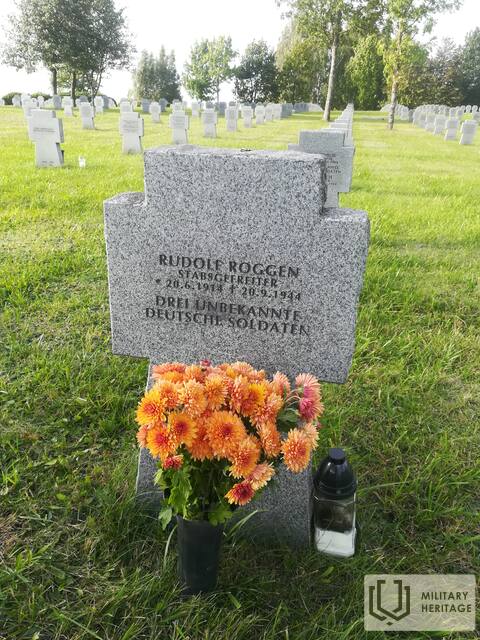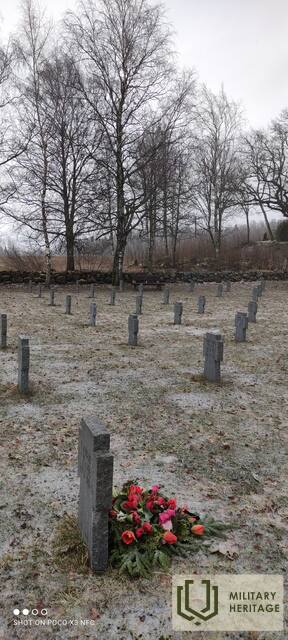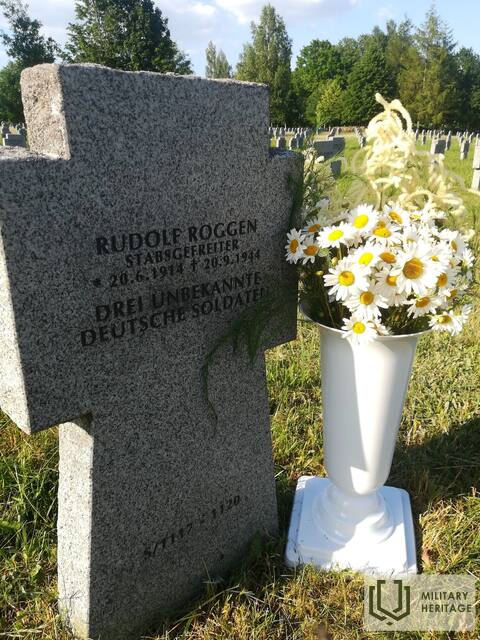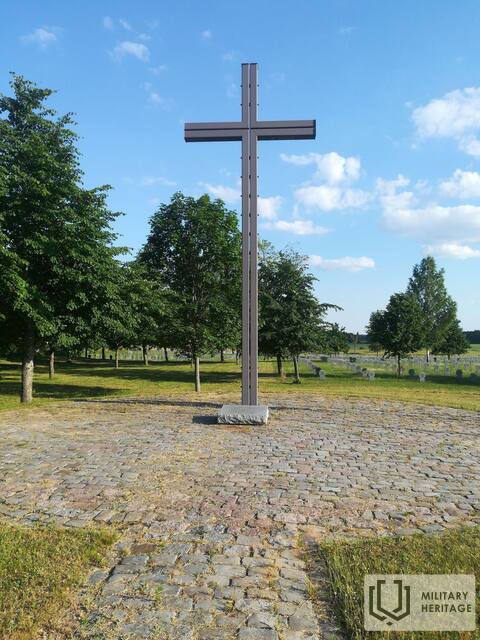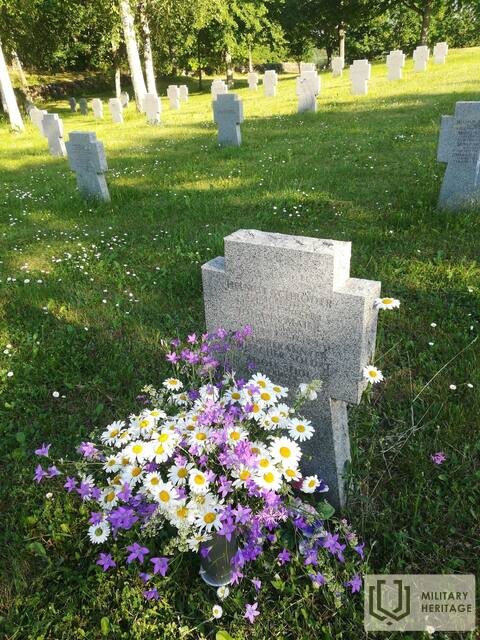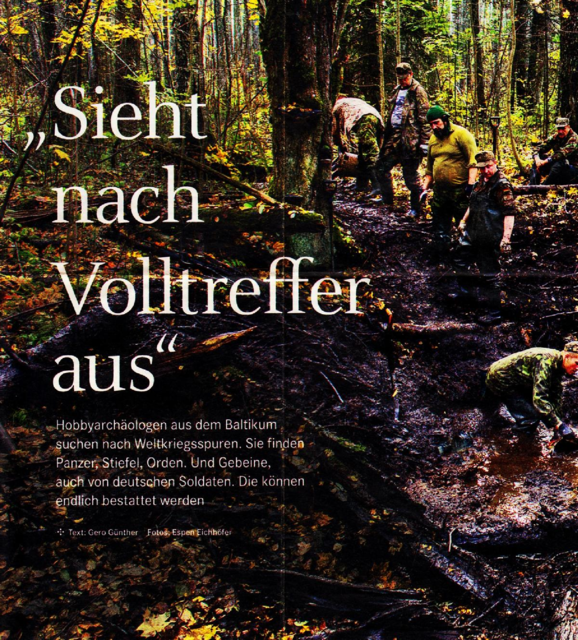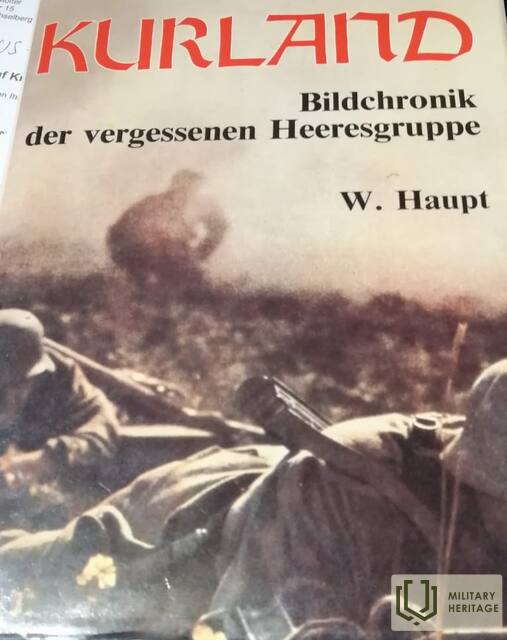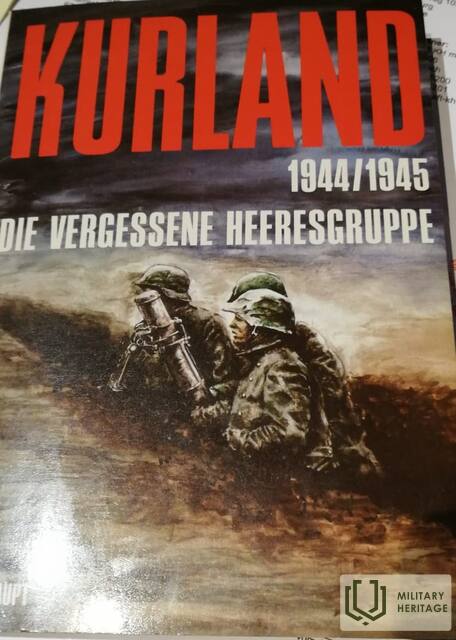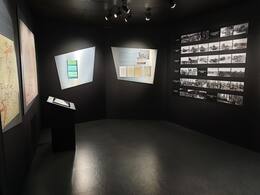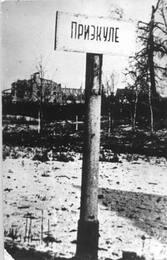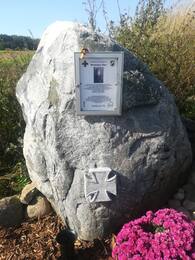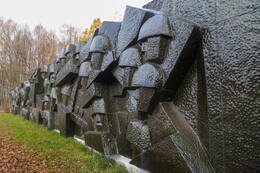"The war is not over until the last soldier is buried" (Saldus German Soldiers' Cemetery)
Kurzeme emerged as a separate and distinct battlefield on 10 October 1944. Some 500 000 German troops were counted as surrounded. According to reports from the 1st Baltic Front Headquarters, only a "small effort" was needed to completely liberate the entire Baltic coast. However, the fighting in Kurland continued for another seven months and Kurland became a symbol of the end of the Second World War.
During the seven months of fighting until May 1945, German forces in Courland lost 154 108 soldiers killed, wounded and missing. Since 1997, a war cemetery survey and reburial of soldiers near Saldus has been carried out and currently 27,000 names of fallen soldiers can be found here
Kurzeme emerged as a separate and distinct battlefield on 10 October 1944. The Red Army had been trying to exploit the success in Belarus since the end of July 1944, where the German army group "Centre" was destroyed in less than a month. In early August 1944, units of the Soviet 3rd Guards Mechanised Corps captured Tukums and reached Klapkalntsia on the Gulf of Riga, cutting off land traffic between Wehrmacht Army Group North and Germany. However, the Red Army's first attempt to interrupt the traffic was unsuccessful, as the German counter-attack resulted in the restoration of the land corridor near Tukums already at the end of August 1944.
The next attempt to encircle the German army began on 14 September 1944, when the three Baltic Fronts with 1 546 000 troops launched an offensive towards Riga. This attempt was also unsuccessful and the Red Army had to change its plans. The third attempt, known as the "Klaipėda Offensive", was not only successful, but became one of the greatest achievements of the Red Army during the Second World War. The 5th Panzer Army, starting its attack on 5 October, reached the Baltic coast near Palanga on the evening of 10 October.
Some 500 000 German troops were estimated to be surrounded. According to reports from the 1st Baltic Front headquarters, only a small effort was needed to completely liberate the entire Baltic coast. However, the fighting in Kurland continued for another seven months and Kurland became a symbol of the end of the Second World War.
During the seven months of fighting until May 1945, German forces in Courland lost 154 108 soldiers killed, wounded and missing. The exact number of dead and missing is unknown, but could have been as high as 50 000. After the end of the war, the cemeteries of German soldiers were destroyed by the Soviets. The exhumation of fallen soldiers from battlefields and ruined cemeteries began in the early 1990s.
Since 1997, research and reburial of war graves near Saldus has started and currently 27 000 names of fallen soldiers can be found here. The work is still ongoing, as not all the burial sites have been explored. The names of the reburied soldiers show that Latvians, Estonians, Lithuanians, Norwegians, Danes and other nationalities were also conscripted into the German army, among Germans and Austrians.
Related timeline
Related objects
Saldus German Soldiers' Cemetery
Saldus German soldier's cemetery is located on the Saldus-Ezere highway. Around 25,000 German soldiers, as well as some Latvian legionnaires, were reburied in the 8-hectare cemetery. Reburial has been taking place since 1997.
From May 1 to October 1, an exposition on the Battle of Kurzeme can be seen in the memorial room. During this period, the memorial room is open on weekdays from 9:00 a.m. to 5:00 p.m., on Saturdays and Sundays the cemetery also has a tour guide. The registers of soldiers buried in Saldus German soldiers' graves and fallen soldiers throughout Latvia are also available.
Ezere local history repository “Muitas Nams” (Customs House)
The Ezere Customs House is located in Ezere near the Saldus-Mažeikiai highway at the Latvian-Lithuanian border. The act of surrender of the German Army units ‘Kurzeme’ (Kurland) surrounded in the so-called ‘Courland Pocket’ was signed in this building on 8 May 1945. It is believed that World War II actually ended in Ezere. The customs house has an exhibit covering the events of the end of World War II and exhibits detailing the history of Ezere parish from ancient to modern days. In the morning of 7 May 1945, the commander of the Leningrad Front, Marshal L. Govorov, sent an ultimatum to the command of the army group ‘Kurzeme’ to lay down arms. The act of surrender was signed by the involved parties on May 8 and it detailed the procedure of surrender, weapons collection points, documents and information to be submitted and other practical measures.
Memorial site for Hermann Faul
It is located at the crossroads of rural roads, turning off the road leading from Pienava to Džūkste.
Memorial to H. Faul, and to the nine German and Latvian soldiers who fell in the battle of 27 December 1944 (probably blown up by a direct hit from a cannon shell) and who are presumed missing since then, as no remains, documents or other evidence of their identity have been found.
Priekule Memorial Ensemble of Warrior’s Cemetery
The Priekule Memorial Ensemble of Warrior’s Cemetery is on the Liepāja-Priekule-Skoda road and is the largest burial site of Soviet soldiers of World War II in the Baltics. More than 23,000 Soviet soldiers are buried here. Operation Priekule was one of the fiercest battles in Kurzeme Fortress that took place from October 1944 to 21 February 1945. The Battle of Priekule in February 1945 lasted seven days and nights without interruption and had a lot of casualties on both sides. Until Priekule Warrior’s Cemetery was transformed into a memorial, the last monument of the outstanding Latvian sculptor K. Zāle (1888-1942) was located here to commemorate the independence battles in Aloja. Between 1974 and 1984, the 8 ha Priekule Warrior’s Cemetery was transformed into a memorial ensemble dedicated to those who fell in World War II. It was designed by the sculptor P. Zaļkalne, architects A. Zoldners and E. Salguss, and the dendrologist A. Lasis.
The centre of the memorial holds a 12 m tall statue called the ‘Motherland’, and names of the fallen are engraved on granite slabs. Until Latvia regained its independence, the Victory Day was widely celebrated every year on May 9.




